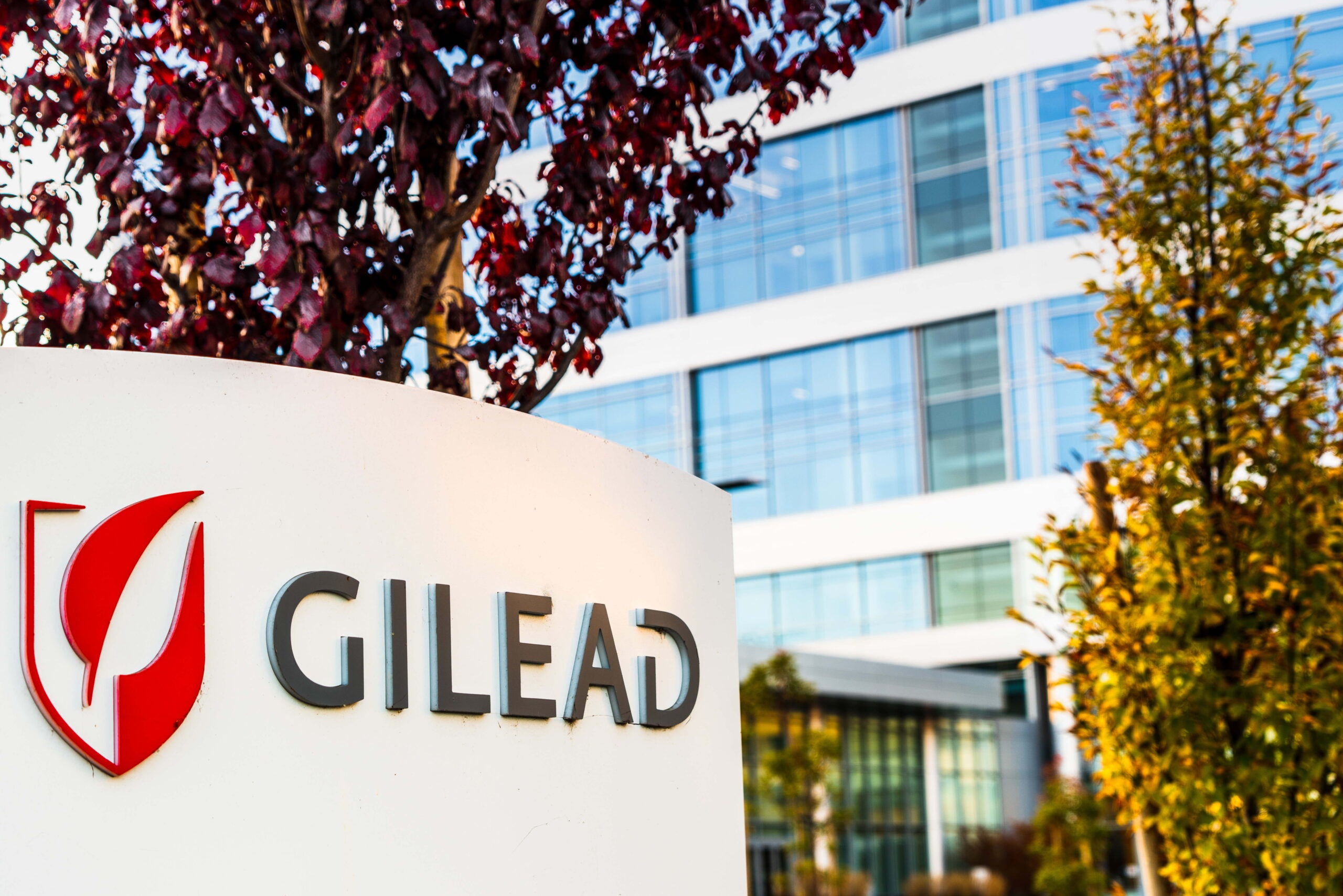
Gilead’s Lenacapavir for HIV: Can New Drug Be a Game Changer
Need to know:
- Lenacapavir/islatravir combo carries mechanistic rationale
- Mixed oral/subQ regimens don’t provide additional convenience
- Cabuneva experience highlights appetite for long-acting drugs
Gilead Sciences’ capsid inhibitor lenacapavir has the most competitive potential in long-acting combination regimens in HIV, including with Merck’s islatravir, experts said. Early lenacapavir data indicates a noteworthy viral load reduction in heavily treatment-experienced individuals. But combinations with oral antiretroviral (ARV) regimens are unlikely to push the needle forward for most people living with HIV without the convenience of a single administration method, they added.
How well do you really know your competitors?
Access the most comprehensive Company Profiles on the market, powered by GlobalData. Save hours of research. Gain competitive edge.

Thank you!
Your download email will arrive shortly
Not ready to buy yet? Download a free sample
We are confident about the unique quality of our Company Profiles. However, we want you to make the most beneficial decision for your business, so we offer a free sample that you can download by submitting the below form
By GlobalDataLenacapavir and islatravir have elicited expert interest since the long-acting injectable drugs could be given less frequently but still carry high potency. Gilead announced a collaboration with Merck in March to study lenacapavir with islatravir, a nucleoside reverse transcriptase translocation inhibitor (NRTTI), which is also a new drug class in HIV. Experts saw significant mechanistic potential by combining the long-acting non-oral versions of both drugs. The novel targets have not elicited any specific resistance concerns, based on the individual preclinical datasets which indicate treatment-resistant variants have low impact on viral fitness.
On 29 June, Gilead submitted an NDA to the FDA for lenacapavir, based on data from results from the Phase II/III CAPELLA study where the drug was added to failing ARV. While the initial approval and use based on the recent NDA filing will involve adding long-acting lenacapavir to a daily oral regimen, the most potential lies with future long-acting non-oral combinations earlier in the disease course, they said.
Data from CAPELLA presented at the IAS Conference on HIV Science last month and at the Virtual Conference on Retroviruses and Opportunistic Infections in March indicated the drug’s potency in reducing viral loads in a heavily treatment-experienced population. Lenacapavir’s capsid inhibition is relatively less understood compared to mechanisms of other approved approaches in HIV. However, the capsid protein is essential for viral entry and hence provides a valid target, experts said.
GlaxoSmithKline and ViiV Healthcare’s recently approved Cabuneva is the only long-acting injectable available for HIV-1 infected adults. Even though its use has been hampered by the Covid-19 pandemic, it provides a good test case for the appetite for long-acting alternatives like lenacapavir.
Several lenacapavir/islatravir combination trials are planned for H2 2021, while lenacapavir continues to be explored with standard therapies in trials like the Phase II CALIBRATE in combination with ARV in people living with HIV. The trial’s primary completion date is in October. However, CAPELLA is focused on heavily treatment-experienced people with HIV (PWH) failing their current regimen with multidrug resistance. Additionally, a Phase III study exploring lenacapavir in pre-exposure prophylaxis (PrEP), where experts saw the most potential, started in June, with a completion date in 2024.
Lenacapavir revenues are estimated to reach $1.08bn in 2027, according to GlobalData consensus forecasts. Gilead is looking at lenacapavir combined with a broad range of agents to address the needs of an effective HIV treatment regimen, said Gilead Sciences vice president of HIV clinical research Dr Jared Baeten.
Long-acting combinations favoured
When it comes to new HIV drugs, it would be ideal to combine two drugs with similar, long-acting pharmacokinetics (PK) to see the true value, said Dr Zeger Debyser professor at KU Leuven’s Laboratory for Molecular Virology and Gene Therapy, adding there is much interest in the field for such combinations. When it comes to planned studies with lenacapavir and islatravir, there is no mechanistic reason why these drugs designed against two different targets would not be synergistic, said co-chair of the University of Utah School of Medicine’s Department of Biochemistry Dr Wesley Sundquist.
If two potent drugs like these can be combined and synchronised for infrequent dosing, that would change the landscape for those living with HIV, said University of North Carolina School of Medicine professor of medicine Dr David Wohl.
The potential with long-acting injectables like lenacapavir is particularly exciting because they can be delivered subcutaneously (subQ), said University of Nebraska Medical Center professor Dr Susan Swindells. Current standard of care for people with HIV involves daily oral antiretroviral combinations. Long-acting drugs like lenacapavir have the potential to change treatment frequencies, which is important in ensuring compliance and delivery and preventing drug resistance, said Sundquist.
Islatravir is being investigated in different formulations including as a daily oral pill, or a long-acting subdermal implant used for PrEP.
New therapies are often studied in treatment-experienced patients even though they will eventually be used earlier in the disease course, said Wohl. In that context, the early CAPELLA data showed a significant reduction in viral load when optimised with background therapy, said Swindells.
At 26 weeks, subQ lenacapavir in addition to optimised background therapy led to sustained virologic suppression in 81% of treatment-experienced individuals. The bar for efficacy is even higher in treatment-experienced patients than newly diagnosed HIV-infected individuals where there aren’t any additional mutations or drug resistance, said Swindells. Thus, lenacapavir has the potential to be helpful in populations across the spectrum, she added.
No drug-related serious adverse events (AEs) or AEs leading to discontinuations were reported in the study. The bar for safety is higher in earlier preventive settings, but even there the convenience factor of a long-acting injectable would need to be taken into consideration while assessing its clinical value, said Wohl.
Mixed short/extended-duration regimens unattractive
For people with HIV, the benefit of adding an oral plus subQ regimen to a setting where a once-daily pill is currently available is unclear, said Wohl. In the CAPELLA trial for treatment-experienced people with HIV, participants were given oral lenacapavir followed by subQ lenacapavir or placebo and then oral and subQ lenacapavir, in addition to their failing regimen. Even the Phase II CALIBRATE study is testing different regimens for people living with HIV involving an oral lead-in with lenacapavir followed by a once-every-six-months (Q6M) lenacapavir injection.
The lenacapavir/islatravir combination studies will study the weekly oral dosing and multi-month injectable versions of the drugs, said Gilead’s Baeten.
Approved regimens for people living with HIV include triplets of two nucleoside reverse transcriptase inhibitors (NRTIs) with an integrase inhibitor or protease inhibitor in most cases. Using a mixed regimen of an oral and subQ drug would defeat the advantage of having a long-acting injectable, said Swindells and Debyser. Lenacapavir’s trials will address needs for HIV treatments across the spectrum, said Baeten. While the combination as tested in CAPELLA in heavily pretreated individuals experiencing resistance to available drugs would be significant for that population, it is much smaller than it used to be, said Swindell, without enumerating it.
As lenacapavir’s capsid inhibition represents a new class of drugs, experts said its exact mechanism of action remains to be fully understood. Lenacapavir inhibits HIV replication by interfering with capsid-mediated uptake of HIV-1 proviral DNA, virus assembly and release, and capsid core formation.
Preclinical data has alluded to lenacapavir affecting the nuclear import, but it is still not known how that happens, Debyser said, adding it is important for clinical development and basic research to understand the exact mechanism. The HIV-1 capsid needs to open to allow the virus to replicate, said University of Missouri Christopher S. Bond Life Sciences Center research assistant professor Dr Kamlendra Singh. If a drug can inhibit the assembly or disassembly of the capsid, that would be significant and results have indicated that lenacapavir inhibits both, he added.
Cabuneva indicates appetite for long-acting drugs
Experts cited the Cabuneva experience often while estimating lenacapavir’s prospects, because the former is the first approved long-acting drug for HIV. The FDA approved Cabuneva, which consists of the integrase inhibitor cabotegravir and Janssen’s nonnucleoside reverse transcriptase inhibitor Edurant (rilpivirine), in January.
Lenacapavir’s subQ administration has an advantage over Cabuneva, which is given via an intramuscular injection and hence cannot be self-administered, said Swindells. The Cabuneva rollout has been more challenging in the backdrop of the Covid-19 pandemic, said Swindells and Wohl. Even though there has been interest, HIV clinics are still trying to work out how to administer it regularly while keeping track of patients, said Swindells. There is an appetite for long-acting alternatives and some people who may have started on Cabuneva and have moved away from oral therapies may be early adopters of lenacapavir combinations, said Wohl.




